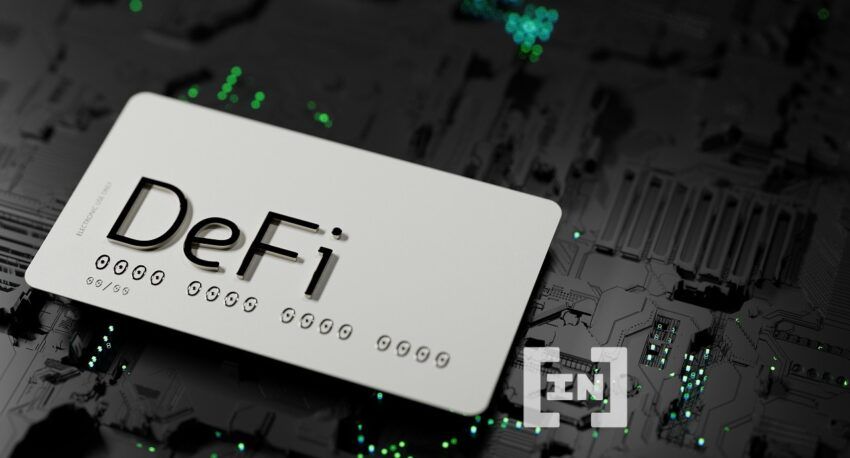DeFi, in its current form, won’t see mass adoption if it fails to address some of the fundamental tensions that the ecosystem is facing, says Brian Fu, Co-Founder of zkLend.
Much is said about DeFi’s core mission: to create greater financial inclusion and bank the unbanked. For mass adoption of DeFi to be possible, it needs to consider those who are currently excluded from existing financial systems. But also, those who are currently enjoying and reaping the benefits of the status quo. This is the audience – the mainstream mass-market users who don’t currently have an immediate incentive to learn a set of new and complex protocols and the novel technology behind it. We need to convince and convert them in order to accelerate mass adoption of DeFi.
According to Consensys, the market cap of all DeFi protocols was US$149 billion at the end of December 2021. This is less than 1% of that of global banks. We have seen many businesses pivot and deploy capital into this space. Many DeFi milestones being well progressed. But DeFi still has a way to go before it becomes available and easily accessible for everyday people. These people are of varying technical competence and financial literacy levels. The financial capital, in time and resources, required to understand the underlying technology is a key barrier. So, we need to answer the fundamental question – what’s in it for them?
We, as a new emerging industry, need to do a better job at shaping and telling the story of DeFi. This is alongside tackling other much talked about issues within it. These issues include the impact of institutional adoption, lack of seamless user experience, and regulation that is currently constricting the growth of the ecosystem.
DeFi and TradFi Collaborations
As we focus on mass market penetration, we must first recognize the value institutional players bring in accelerating retail adoption. Institutions bring substantial monetary value, with Chainalysis reporting that 60% of DeFi transactions are made by ‘large institutions.’ Transactions are defined as greater than $10M. More importantly, when big players in traditional finance take active, genuine steps towards crypto adoption, it reflects confidence for otherwise conservatives and skeptics.
Some prominent moves recently include the announcement by financial services provider, Fidelity. Their plans allow a portion of retirement savings to be allocated to Bitcoin. Banking giant, Goldman Sachs, offered its first loan to a borrower backed by Bitcoin as collateral. Similarly, we’ve seen one of France’s largest banks take a historic step towards institutional adoption by applying for a $20M stablecoin loan from MakerDao. MakerDao is one of the largest DeFi lending platforms. The loan involves on-chain bond tokens issued by the bank as collateral. These are practical steps towards digital asset experimentation by financial giants that set precedence for other companies to follow suit and a path towards adoption.
Other Collaborations
Various other banks and traditional financial services opted to delve into the space in 2021. This is in different forms, including launching a trading desk for digital assets, supporting the custody of digital assets, leveraging new blockchain-based custody platforms, developing a digital token, or otherwise exposing its customer base to digital assets in some form.
These steps spark excitement and make the headlines. But they also demonstrate a legitimate use case for digital assets – beyond only extracting value when prices increase.
In addition to bringing a degree of trust, awareness and publicity, institutions also bring a level of support to the development of Web3 infrastructure, UX, and security into the space.
We have seen early-phase adoption within small to medium crypto funds. But larger, more regulated entities have more onerous compliance and regulatory reporting requirements. Having infrastructure that meets the institutional requirements for compliance, security and operations, and that in some cases can be enjoyed by retail users, will be key to taking them from DeFi experimentation through to adoption.
Tensions and Regulation
Capital flooding into the space shows an appetite for DeFi. But there is an obvious tension between governments and crypto as it relates to regulation. The intention is to safeguard the public interest, but this further impacts institutional and retail adoption.
Regulation is always more favorable than a ban. But regulatory bodies can simply recycle and impose traditional finance rules onto DeFi. With this move, they risk not only stifling the innovation and gains made in DeFi, but also the essence of Web3. This defeats its mandate of safeguarding the public interest.
One example of this is the recent European Union proposal. It requires crypto service providers to collect personal information on senders and beneficiaries in all crypto transactions, with no minimum threshold. The proposal is designed to prevent illicit flows and criminal activities. The aim being to “ensure crypto-assets can be traced in the same way as traditional money transfers.”

DeFi Vs TradFi
This is a key illustration of lawmakers not understanding and appreciating a fundamental difference between TradFi and DeFi. It assumes that a self-custodial wallet linked to a verifiable identity means that this person controls the wallet. This is much in the same way that a bank account linked to a verified identity means the identity has ultimate control of the account. This, however, is not the case with self-custody of crypto assets. Control and the ability to transact is not tied to anyone’s identity. But rather by the holder of the private keys to that wallet. Rather than giving up one’s own sovereignty over their assets to a bank, they maintain complete ownership in exchange for storing their private keys safely.
TradFi is the Past, DeFi the Future
From this proposal, we can expect to see the scope of mandates from TradFi that were initially designed for wire transfers to be gradually expanded to include transfers of crypto assets. This should be objected to on principle grounds to maintain the sanctity of DeFi. It risks sacrificing the tenets of self-custody and privacy, as well as user security. In the event of a hack, a bank can block the account whereas a self-custodial wallet lacks this ability, thereby exposing users to a heightened level of risk if privacy is compromised.
This is the time for the DeFi community to proactively engage with policymakers and take an educated stance on the costs of ineffective and burdensome compliance processes. The DeFi community needs to develop a new regulatory framework that balances the importance of scrutiny and decentralization. This is important not only to adhere to the core tenets of DeFi. But it is needed for maintaining the talent and capital required to grow this sector. We should promote interconnectivity between centralized and decentralized players while introducing compliance solutions that respect both sides.
DeFi: Overcoming the Barrier to Learning
Regulatory uncertainty casts a shadow over the DeFi sector. And, there’s another key challenge for DeFi. That is, the lack of user-friendly interfaces that is necessary to drive continued exponential growth and new users into the space.
Many new users have hopped over from Web2 to experience the hype. We need to cater to the crypto-curious and late majority by reducing the barrier to entry and barrier to learning.Institutions are deterred by compliance and security issues. But mainstream users are further deterred by difficult and clunky UX and UI.
A user who is interested in Web3 and DeFi protocols must first understand what a wallet is and how to fund it. They would also need a base layer understanding of other fundamental Web3 components. These include bridges, wallets on different chains, and DEXs. In general, many DeFi applications are complex and inundated with industry jargon. The upfront cost and time required to learn and test out the technology are key deterrents for new users.
Further, the user experience in DeFi still consists of applications offering different services i.e. lending/borrowing and exchanging assets requires different applications. DeFi developers need to understand that this is an additional obstacle for newcomers. Mainstream users are used to a different system – one where a single interface provides all the financial services one needs to look after their finances, from savings to loans.

DeFi Fragmentation
Current fragmentation between networks requires that users have to understand and constantly switch between applications to access different financial products. This is exacerbated by the fact that all protocols are decentralized and developed separately. The interactions between protocols are not always user-friendly, streamlined, and error-proof.
The barrier to learning is further compounded by the high gas fees required to experiment with, and learn DeFi protocols on Ethereum. This is especially true during periods of high congestion. The work required to integrate and provide a better and more seamless UX needs to go hand-in-hand with advancement in rollups, which executes transactions outside the main Ethereum blockchain. This can address scalability issues which will reduce cost of experimentation while maintaining decentralization.
DeFi: Mass Adoption
To propel DeFi to a new level of experimentation and adoption, we need to first understand the issues plaguing the ecosystem from a users’ point of view. We need to encourage collaboration with regulatory bodies, and promote widespread consumer understanding and education. In doing so, we can lower the barrier to learning and have the requisite infrastructure. This will ensure that not only are the masses ready for DeFi, but that DeFi is ready for the masses.
About the author
Brian Fu, Co-Founder of zkLend. Brian has more than 15 years of experience in TradFi, investment banking and private equity at major financial institutions including Bloomberg, Standard Chartered Bank, Silk Road Finance and China Merchants Capital, before diving into the world of on-chain protocols and crypto. Having experienced the bottlenecks and pain points of TradFi infrastructure firsthand, he looks forward to building with people and technology that can realise this new financial paradigm.
Got something to say about DeFi, TradFi, or anything else? Write to us or join the discussion in our Telegram channel. You can also catch us on Tik Tok, Facebook, or Twitter.
Disclaimer
All the information contained on our website is published in good faith and for general information purposes only. Any action the reader takes upon the information found on our website is strictly at their own risk.


